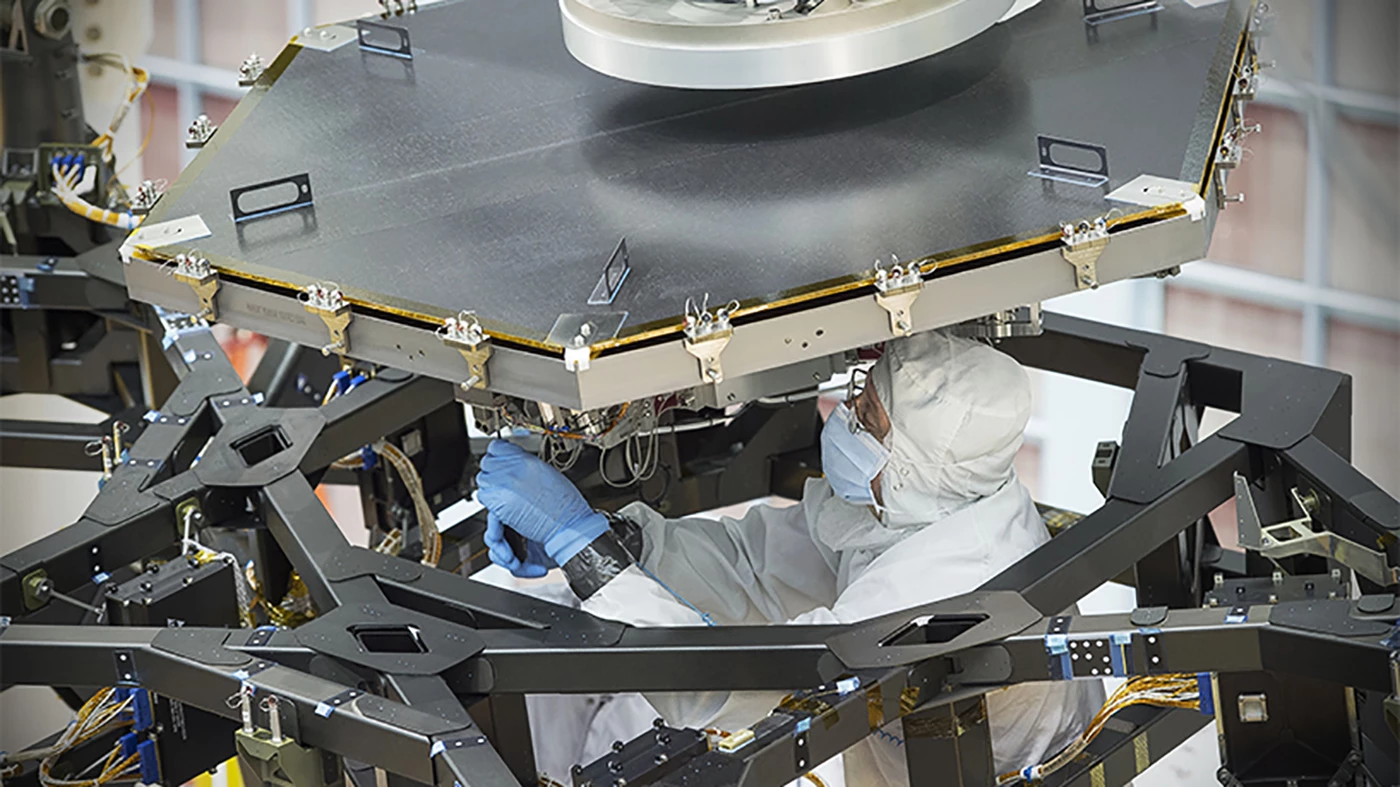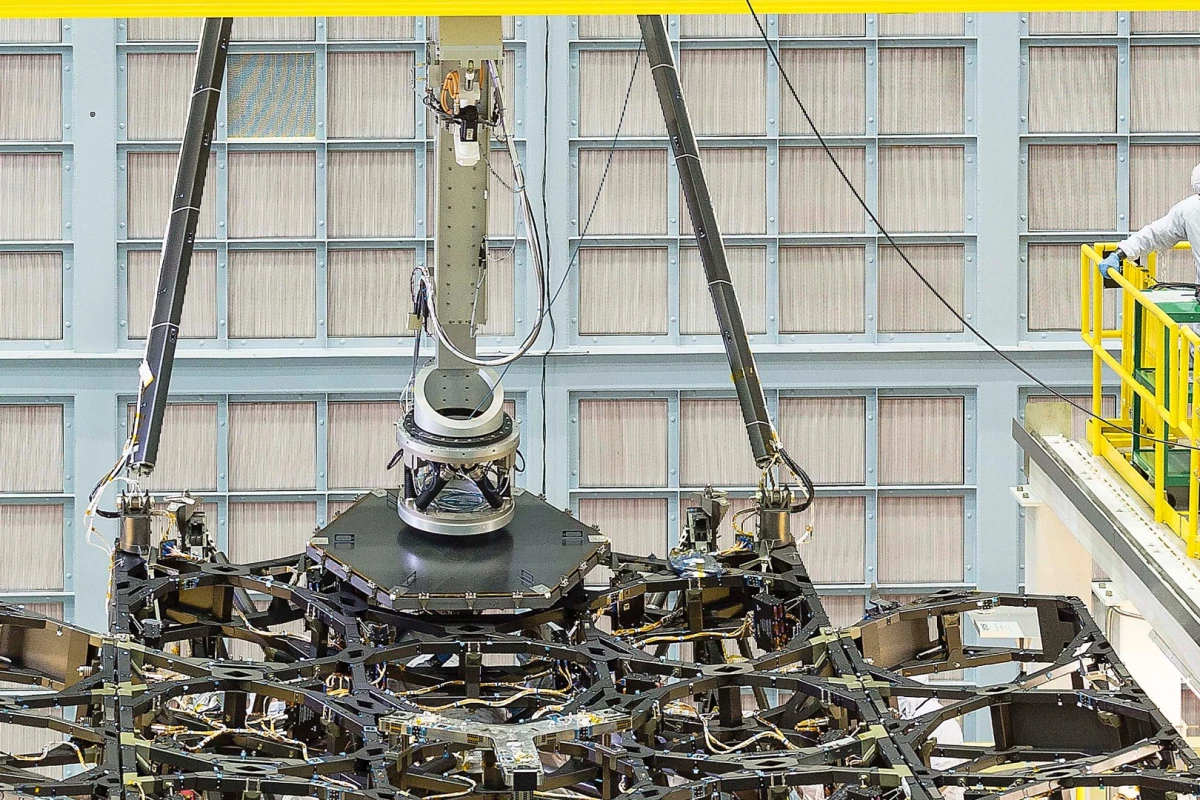Construction is well under way on NASA's James Webb Space Telescope (JWST) – the space agency's next generation installation, scheduled to launch in 2018. The instrument is really starting to take shape, with engineers successfully installing the first of 18 mirrors.
An ambitious program, the JWST is NASA's successor to the much celebrated Hubble Space Telescope, a versatile installation (it's capable of capturing visible, infrared and ultraviolet light) that has, on near countless occasions, provided significant scientific insights.
Originally conceived almost 20 years ago, the JWST will be capable of viewing the very first generation of stars that ignited in the early Universe. It'll be used to investigate the formation of early galaxies, study the evolution of our own solar system, look at distant worlds, and much more. If it's anything like its predecessor, it'll have a huge impact on humanity's knowledge of the Universe.

The construction is taking place in a clean room at NASA's Goddard Space Flight Center in Maryland. The team used a robotic arm to carefully lower the hexagonal mirror, which measures some 4.2 ft (1.3 m) in diameter, and weighs in at around 88 lb (40 kg). It's made from ultra-lightweight beryllium and has a thin gold coating, designed to help it reflect infrared light.
A further 17 segments will be moved into place in the coming months. After being inserted into orbit, the segments will unfold to form a single 21.3 ft (6.5 m) mirror.
"After a tremendous amount of work by an incredibly dedicated team across the country, it is very exciting to start the primary mirror segment installation process," said Goddard Flight Center optical telescope element manager Lee Feinberg."This starts the final assembly phase of telescope."
For more on the ongoing construction,NASA has provided a live webcam feed.
Source: NASA




